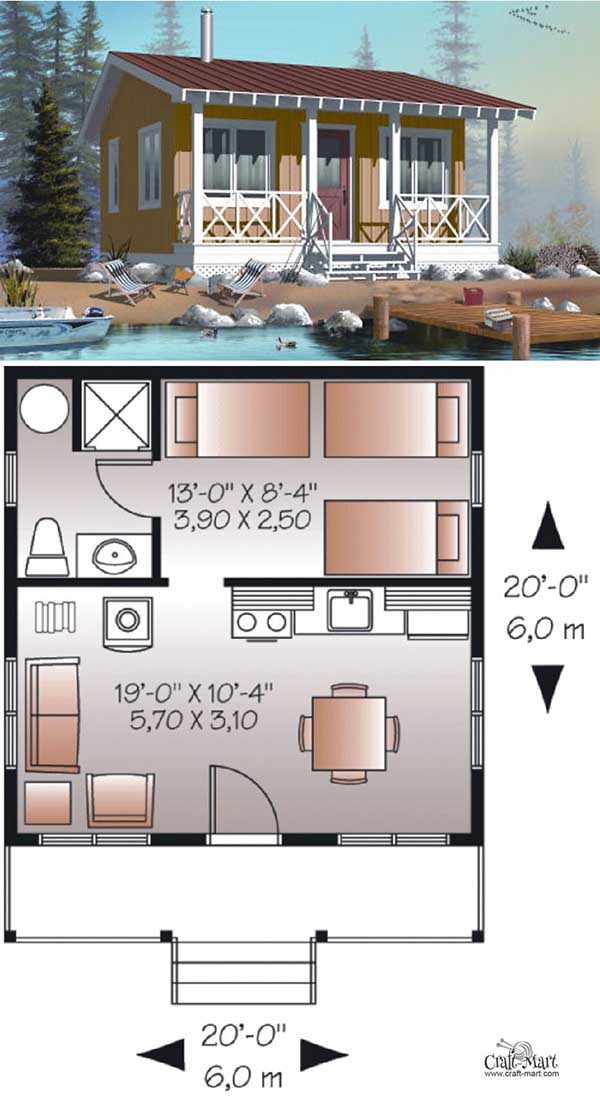Imagine a life stripped down to the essentials, where your living space is a thoughtful haven, not a burden. That’s the allure of tiny house living, and the first step towards making it a reality is designing your own tiny house floor plan. This isn’t just about squeezing everything into a small space, it’s about maximizing every inch to create a truly livable and functional home.

Image: viewfloor.co
Whether you’re yearning for financial freedom, environmental sustainability, or simply a minimalist lifestyle, designing a tiny house floor plan is an exciting adventure. This article will guide you through the process, from understanding the basics to incorporating unique design features, ultimately empowering you to craft a floor plan that perfectly reflects your needs and dreams.
Understanding the Basics
Before diving into the fun part of designing, it’s crucial to grasp the fundamentals of tiny house floor plans. Here are some key considerations:
1. Size:
Tiny houses typically range from 100 to 400 square feet. Define your ideal size based on your needs and lifestyle. Consider the number of people you’ll be living with and the activities you want to do. Remember, every inch counts, so prioritize and make strategic choices.
2. Layout:
The layout significantly impacts the feel and functionality of your tiny house. Popular layouts include:
- Open Concept: This layout minimizes walls, creating a sense of spaciousness and flow.
- L-Shaped: Often features a galley kitchen along one wall and a living space adjacent to it, maximizing space utilization.
- Loft Style: Utilizes a loft space for sleeping, freeing up floor space for living and kitchen areas.

Image: floorplans.click
3. Building Codes:
Each location has its own building codes that determine minimum sizes, clearances, and other regulations. Research local codes thoroughly before finalizing your design to avoid costly and frustrating complications.
4. Budget:
Set a realistic budget and stick to it. Tiny houses can be surprisingly affordable, but costs can escalate quickly if you don’t plan meticulously. Prioritize essential features and explore cost-effective materials and construction methods.
Creating a Functional Floor Plan
With the basics in mind, you’re ready to start designing! Here’s a step-by-step approach:
1. Draw Your Dream Home:
Begin by sketching your ideal living space. Don’t be afraid to experiment with different ideas. Consider the following:
- Living Space: Where will you relax, entertain guests, and enjoy your favorite activities?
- Kitchen: How important is cooking? Do you need a full-sized oven or will a microwave suffice?
- Bathroom: Maximize space with a compact toilet, shower stall, and clever storage solutions.
- Bedroom: Consider a loft for sleeping, or use a Murphy bed to save space during the day.
- Storage: Think vertically by incorporating built-in shelves, cabinets, and drawers.
2. Embrace Multi-Functional Furniture:
Tiny house living is all about maximizing space and versatility. Invest in furniture that serves multiple purposes, such as a sofa bed, a dining table that converts to a desk, or a storage ottoman.
3. Utilize Every Inch:
Think beyond traditional floor plan layouts. Explore niche storage solutions like under-stair storage, floating shelves, and corner cabinets to maximize every inch of space.
4. Prioritize Natural Light:
Natural light is vital for a welcoming and airy tiny house. Maximize windows and skylights to brighten every corner. Consider the orientation of your house for optimal sun exposure throughout the day.
5. Ventilation:
Good ventilation is crucial for maintaining a healthy indoor environment. Incorporate exhaust fans in the bathroom and kitchen, and consider strategically placing windows for cross-ventilation.
Advanced Design Considerations
Once you’ve established the fundamental layout, you can start exploring advanced design elements:
1. Sustainable Materials:
Embrace eco-friendly practices by incorporating sustainable materials like bamboo, reclaimed wood, and recycled plastics. These choices contribute to a greener and more environmentally conscious lifestyle.
2. Smart Home Technology:
Integrate smart home devices to enhance your tiny house living. Consider a smart thermostat, automation systems for lighting and appliances, and even a security system for added peace of mind.
3. Decluttering Strategies:
Tiny house living encourages intentional living. Consider minimalist design principles and embrace decluttering strategies to create a sense of calm and functionality.
4. Outdoor Living:
Don’t forget to incorporate outdoor living spaces. A small deck, a patio, or even a rooftop terrace can expand your living area and create a connection with nature.
Finding Inspiration
There are countless resources available to inspire your tiny house design. Browse magazines, books, and online communities dedicated to tiny house living. Attend tiny house events and visit tiny home communities to experience different designs and talk to other tiny house dwellers.
Design Your Own Tiny House Floor Plan
Conclusion
Designing your own tiny house floor plan is a journey of creativity and practicality. By embracing the fundamental principles, exploring innovative solutions, and embracing a minimalist mindset, you can create a home that is not just small, but truly reflects your unique lifestyle and dreams. So, grab your pencil, unleash your imagination, and embark on the exciting adventure of crafting your own tiny house sanctuary.






